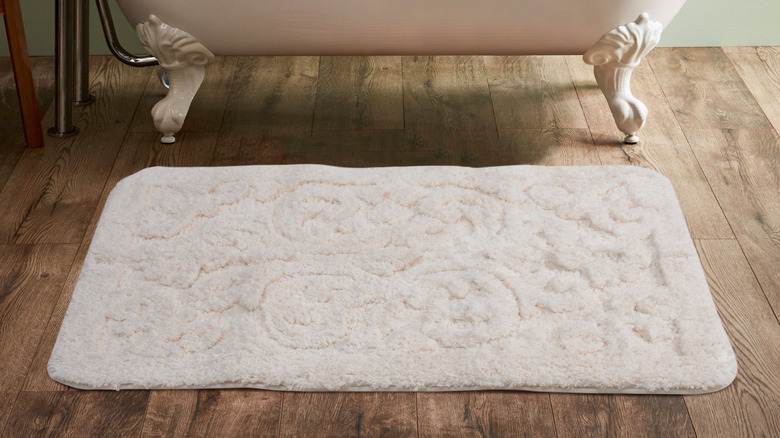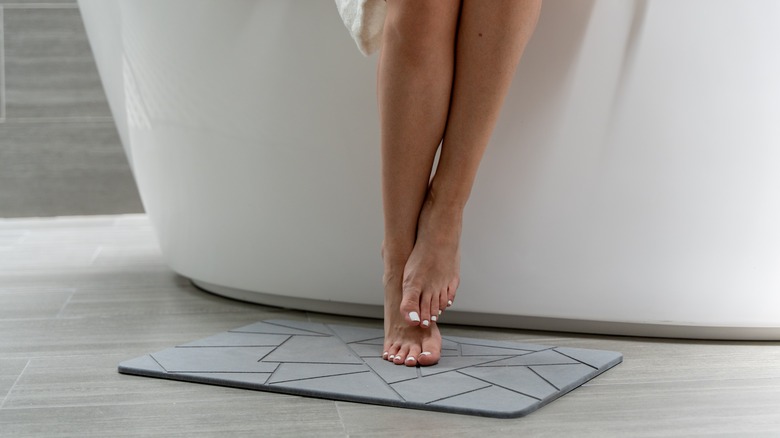Why The Classic Bath Mat Is Not Your Friend And What To Use Instead
Every bathroom should include absorbent items like towels for the inevitable hand washing and showering that takes place there. Since the bathroom sees the most amount of moisture, bath mats are placed for people to step on and dry off after a shower. They're typically soft for comfort underfoot, but a fabric mat could actually be doing more harm than good. You may be surprised that hard-surfaced mats, such as stone, are often the better choice.
While a standard plush bath mat absorbs water well, it could hold on to the moisture long-term if it's not properly dried or cleaned. Not only will that cause the fabric to smell and become less functional, but it could also become potentially dangerous if mold and harmful bacteria grow. You'll need to limit your bath mat's exposure to water by picking it up off the floor after you shower to ensure it dries as thoroughly as possible. Also, be aware of how often you should be cleaning your bath mat and make sure it becomes part of your regular bathroom maintenance routine.
Aside from fabric bath mats made of cotton or wool, synthetic ones have their disadvantages as well. Their problems are primarily environmental, as the process of making them leaves a high carbon footprint. Synthetic bath mats — including memory foam, nylon, and polyester — are not biodegradable. Additionally, because they're made of plastic materials, these types of mats tend to give off a strong, stale smell.
Avoid plush and textile bath mats to reduce the risk of mold
The best way to make sure you are choosing a safe bath mat is to be specific about the material it is made from. Bath mats come in various formats that tout several different benefits, so take this into consideration when replacing your bathroom mats. For example, silicone is a more hygienic — albeit firmer — option that dries quickly and is easy to maintain. Alternatively, microfiber bath mats combine the best of both worlds by being hygienic (when properly maintained) and still including elements of softness. They are fast-drying and resistant to mold and mildew, plus they feel soft like cotton but are more absorbent. It's still best to occasionally clean or at least wipe down the microfiber to ensure soap scum and water stains do not accumulate.
Sustainable options could also be the ideal bath mat material for you. Harder surface boards like cork, bamboo, and even trendy diatomaceous earth mats are stylish and will naturally resist mold and mildew. They're antimicrobial, and their earthy elements feel grounding. You can even DIY a stone tile bath mat that's easy to clean and makes your bathroom look like a spa. Just be sure to wipe away any water that remains on the surface so it does not fall onto your floor. It also helps to have your bathroom properly ventilated. This will regulate the amount of moisture and dryness in the air, which can limit the growth and spread of mold and bacteria.

